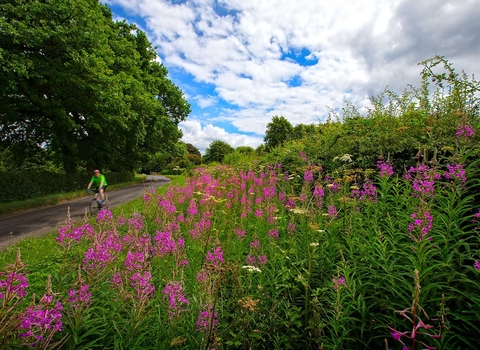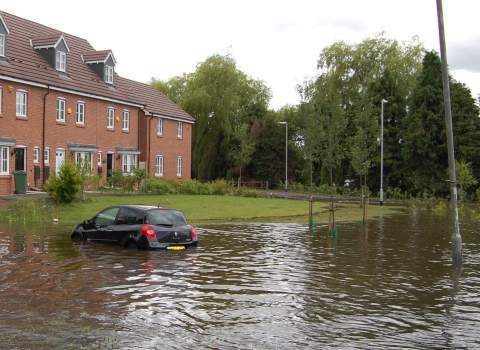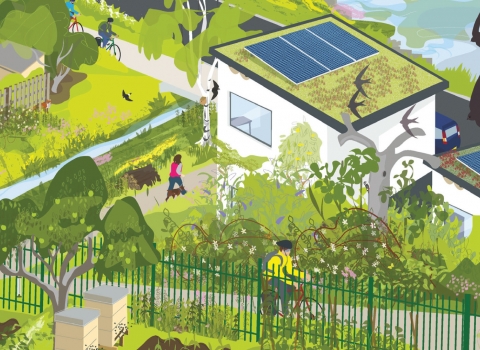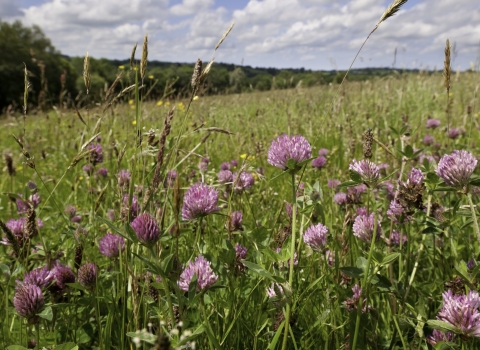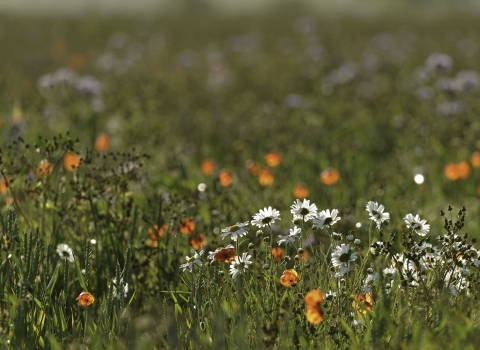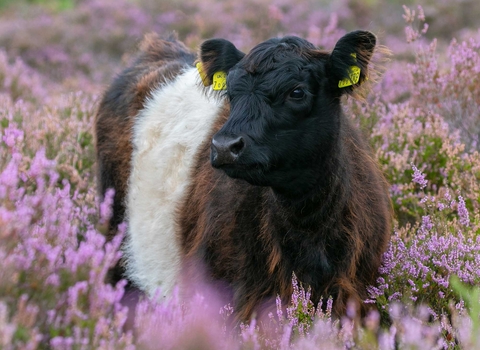Creating a wilder future
From housing estates to farms, nature reserves to road verges, a Nature Recovery Network is a joined-up system of places that allow wildlife and people to thrive.
It allows plants and animals to move across the landscape and provides places for them to live, feed and breed. But It can only do this effectively if, like our road network, it is treated as a joined-up whole.
We believe in a future Surrey where nature is a normal part of childhood and where wildlife thrives across the landscape. Where our urban spaces are green and seeing a variety of wildlife species is an every day experience.
Like most of the UK, Surrey today is a human-dominated landscape.
Many original habitats have gone, and natural ecosystems are fragmented. Heathlands, meadows, ponds and other places with an abundance of wild plants and animals are getting smaller, fewer, more polluted, and more cut-off from each other. Most of our plants and animals are declining. One third face extinction in our county alone.
Given the pressure on land for things like housing, this is not surprising. However, our separation from nature has led to other unintended negative effects. Our lifestyles are unsustainable, our health poor and our access to green space for exercise, relaxation and fresh air, shrinking. No one disputes this – yet our farming and planning systems have often taken us in the opposite direction.
Making space for nature to meet the needs of wildlife and people
Nature conservation in the last century succeeded in protecting some vital wildlife sites through the creation of nature reserves. But wildlife has still declined.
Protected wildlife sites alone are not enough, we also need to provide protection for the many other places in the landscape that are still rich in wildlife despite the many pressures they face and relink Surrey’s disconnected nature reserves.
We need to create a Nature Recovery Network that extends into every part of our towns, villages and countryside, bringing the benefits of a healthy natural world into every part of life. Letting flowers bloom along road verges, installing green roofs across towns, wildlife friendly planting on new housing estates and encouraging whole communities to garden for wild plants and animals.
A network that brings wildlife into every neighbourhood would also provide fairer access to nature for people and the benefits it brings.
Every space in Britain must be used to help wildlife
How to make the network
To work towards a wilder Surrey that is beneficial to people and wildlife, we need the laws, the tools and the people to do it.
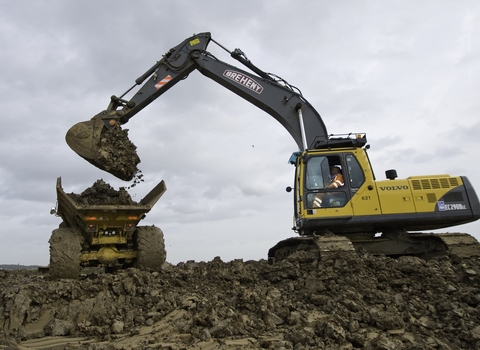
© Terry Whittaker/2020VISION
1. An Environment Act
We need a new Environment Act, passed by a Westminster Parliament. This would commit future governments to increasing the diversity and abundance of our wildlife, making it a bigger part of everyone’s daily lives; and to improving the health of our air, soils, rivers, seas, and consequently, people.This Act would build on the foundations of existing wildlife laws. It would be about nature’s recovery and rebuilding society’s connection to the natural world. It will need to ensure that regulation, investment, public spending and practical action work effectively together.
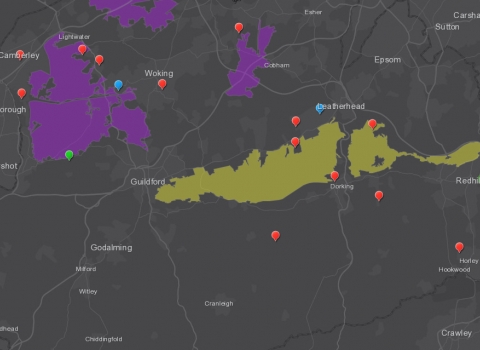
2. Nature Recovery Maps and Plans
For nature to recover, we need Local Nature Recovery Network maps and plans, to identify where good wildlife habitat is already, where it should be and how it will be protected, restored, created and joined together to achieve recovery. The maps would then be used for local planning decisions and to target investment of agricultural funding, net gain contributions and more. So we are calling for laws to require all relevant parts of central and local government to work together to map, plan and create a Nature Recovery Network.
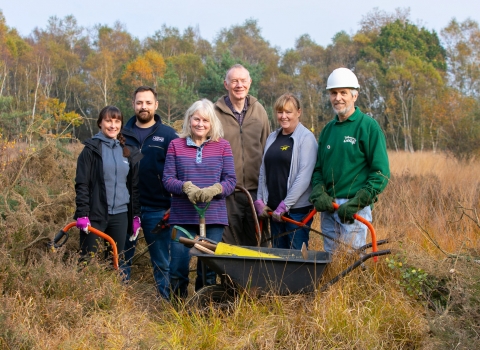
© Jon Hawkins
3. The people to make it happen
People and organisations from all corners of society will need to be called upon make space for nature. This will include land managers (such as farmers and foresters), developers and investors, public bodies and regulators. All of us have a role to play. We can help by taking action for, and providing space for, wildlife where we live and work.
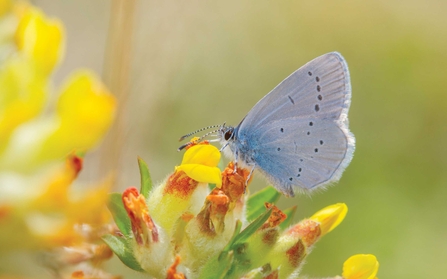
A Nature Recovery Network in Surrey
Biodiversity Opportunity Areas
In Surrey we are focusing on three key areas across the county called Biodiversity Opportunity Areas (BOAs), to maximising our impact on the ground. This means working together with other organisations and communities to restore large areas of habitat.
30by30
The Wildlife Trusts are calling for at least 30% of our land and sea to be connected and protected for nature’s recovery by 2030. Making more space for nature to become abundant once again will give our struggling wildlife the chance to recover and also restore beautiful wild places - places that store carbon and help to tackle the climate crisis.
Surrey Wildlife Trust is raising funds to work with others to create a ‘Wildbelt’ of wildlife rich habitat for bees, bugs and butterflies across the North Downs. Working with councils, landowners, charities, farms, vineyards, schools and community groups, we want to restore the historic chalk ridges between Guildford and Reigate, which were once needed to protect us in case of enemy invasion in World War Two. They are still needed today to protect our health and wellbeing and to protect the future of our bees, bugs and butterflies in Surrey.
Read more
Recent news
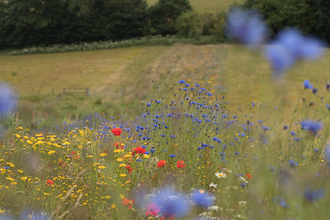
Frustration as Government pauses the Sustainable Farming Incentive scheme
Government pauses all new applications from farmers to access England’s flagship green farming scheme.
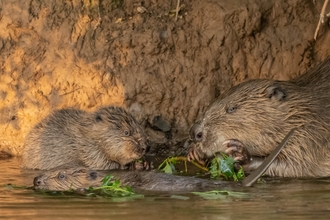
Beavers are coming home!
The Wildlife Trusts congratulate the UK Government’s decision to open the door for licenced reintroductions of beavers into the wild and…
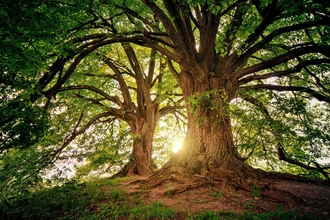
New report shows how UK can reverse nature loss and lead on world stage
The Wildlife Trusts launch a report which outlines the steps UK Government must take to reverse nature loss and meet global targets.

